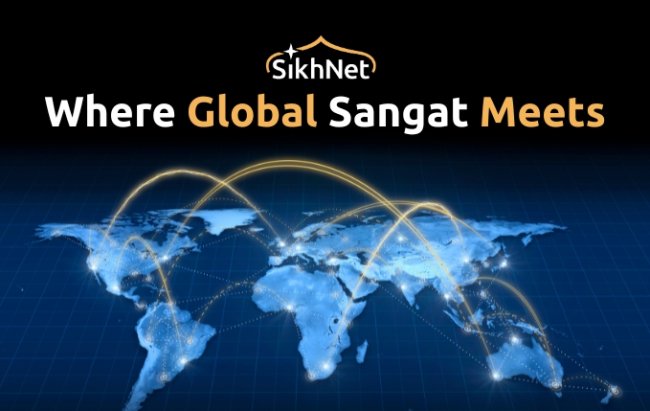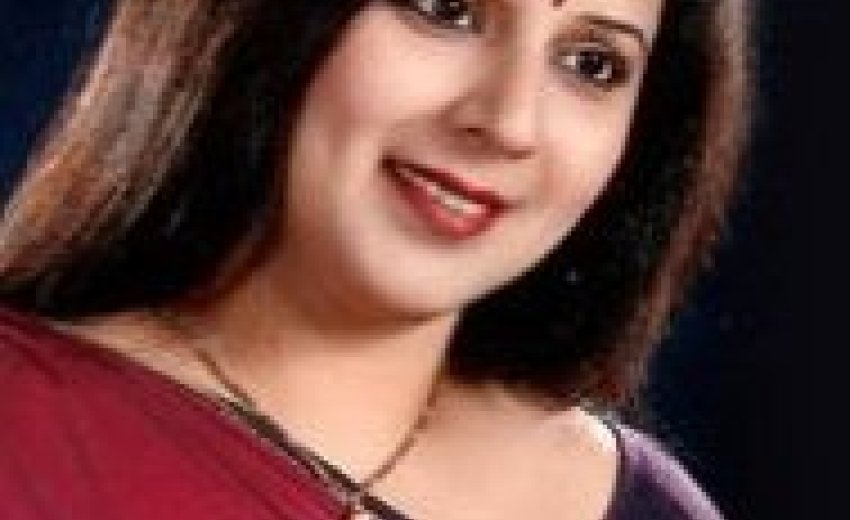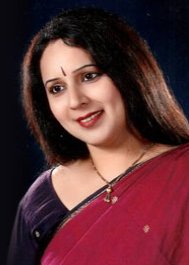 |
| Dr. Dimple Kaur Psychotherapist and Counselor |
Dimple, who has been practicing Bharatnatyam for long picked up Vilasini Natyam from Swapnasundari, a veteran dancer who has been instrumental in reviving the ancient dance form that was practised in the temples of the country before the Britishers imposed a ban on it.
"I wanted to bring the lost form of the dance back. There are a lot of cultural aspects which have been forgotten and the current generation does now know anything about them," says Dimple who gave a performance here late last evening.
Vilasini Natyam has been performed over the centuries as a part of the devadasi tradition in Andhra-Pradesh. It faced a decline during the socio-political changes that took place during independence era, especially when it is banned by "The Madras Devadasis (Prevention of Dedication) Act, 1947", which pointed out that devadasis were forced to adopt a life of prostitution.
"Guru Swapansunadari has revived this dance form and coined the name 'Vilasininatyam' after 'Vilasinis' or 'Bhoginis', which refer to devadasi or hereditary female dancers in temples. And when I saw my guru Swapansundari dancing, I found it so engaging, so communicative that I really wanted to know more about it," says Dimple.
Swapnasundari calls Dimple as the first Sikh girl who is "learning and performing Vilasini Natyam."
Though Vilasini Natyam movements appear quintessentially feminine, its hundred-odd Adavus (dance-units) include the Tandava (vigorous) and Lasya (soft) aspects. Vilasini Natyam's complex Abhinaya is widely admired. Its extensive repertoire comprises temple dances, court dances and dance operas of the hereditary female singer-dancers of Telugu origin.
Dimple believes that younger generation in the country has not been exposed to classical dance forms.
"As a presenter I always want to expose the ancient dance to younger generation, however the problem is that they already have so many different varieties of choices to make in life that they find such things outdated and unappealing. The feeling of pride in our own tradition is what is missing. Even parents never bring them to such events. I am doing my bit, at least let me show it to them," she says.
---------------------------------
Related Article:Bharatnatyam tunes. In conversation: Dr. Dimple Kaur
Vivek Kumar
http://www.speakingtree.in/spiritual-blogs/seekers/wellness/bharatnatyam-tunes-in-conversation-dr-dimple-kaur
Dance is movement. It is based on rhythm that moves the universe. Anybody living in India, when comes across this syllable ‘dance’, the picture of Nataraja appears in the mind. Nataraja—the king of dancers—is portrayed taking steps to create, sustain and destroy the world. What is unique to this dancing form of God? The art-form and the artist (dance and dancer) are inseparable. Unlike any other art form, dance can’t exist without the dancer itself.
Our bodies are connected through a complex system of nerves, veins, and other physical mechanism. The functionality and movement of every limb and member of our body depend on how active it is. If it is not dancing to the tunes (heart-beat), it is non-functional.
So, can dance bring the susceptibility of neurons in such organs and help the human body work in a better way.
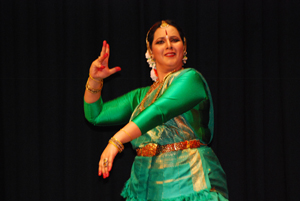 |
| Dr. Dimple Kaur in a concert in Epicentre, Gurgaon, Haryana, India |
Dr. Dimple started early in dance (early 80s) and pursued it with hard-work and dedication. Her parents were pretty open-minded and they supported her passion for dance. It was the movie “Meera” that inspired her to pick up dance seriously. In 1996, her desire for perfection led to the fold of renowned Dr. Sonal Mansingh. It was under Dr. Sonal’s tetulage that her passion got rooted to Indian culture and the variety that it offers. She mentions that learning under a performing Guru is all so different than learning from a non-performing Guru.
Hailing from a Sikh Family, it was not easy for her to pursue a classical form of dance after marriage. However, with the support of her husband and her own self-belief, she was able to pursue her passion. Mid-way in her journey, she developed some doubts as whether she should give up. But something kept happening that made her think that perhaps dance is choosing her. Then, a particular incident made her take the decision, and pursue it for life.
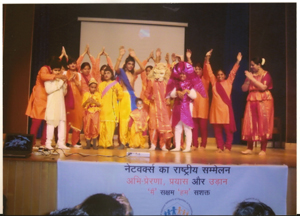 |
| Children with special needs |
VK: Tell us about your work with children where you incorporated dance as learning and healing therapy?
DK: I already was running a primary school in Shalimar Bagh during my journey with dance. Because it was my school, I could incorporate lots of new ideas and techniques. That experience, I could understand how constricted people have become in their movements. Almost everything is constricting the human body. At the nursery level, we develop lots of play-way techniques for kids. These techniques are related to motor development of children. When I started talking to parents, I noticed from a dancer’s perspective how constricted their movements are. This was the moment when I thought of using dance as a healing tool; as an expansion of the inner self.
VK: So, this was the time when you started it?
DK: Yes, we formed a group of women who would meet say once a week in the school itself. I got some very good results and then I started studying it seriously. There is a lot of study going on in the West on dance as a therapy. I met Ms. Kashyap who had done dance therapy from US. I did a course with her and I was very happy to know that some work like this was going on already. I had so much backing from Bharatnatyam, which so evolved a dance form—I sometimes wonders that the developers of this dance form must have studied anatomy. I wanted to use this therapy not simply for disabled people but also for abled people to function at their optimal level. And now, I am launching this workshop at VIMHANS. This is for people with depression, anxiety, stress, low self-esteem, and even for academically-low students.
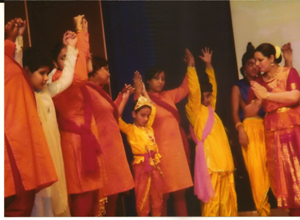 |
| Children with special needs |
VK: How exactly you model the workshop?
DK: On one-on-one interaction, I start with psychological counselling and then develop a model. But for dance therapy, I immediately start with movements. I worked with parents or care-takes or multiply-retarded children—just imagine, how would they feel? What stress they would be under? They are very sad, low and in a given-up mode. Then I developed some techniques in which they can express their feelings, get confidence in their movements and then acknowledge the difference in others. I pick a lot of activities from dance and make them do it. They need not be experts in dance. With movements, there is a change in their energy level and they are able to project their inner feelings.
VK: How Bharatnatyam helps you in this?
DK: Bharatnatyam brings in lot of movements that could be incorporated in our day-to-day work. There are many stylized movements also but some of them are really easy for non-dancers also. I don’t want to teach them dance but in any particular dance, movements are finely defined. So, I just use that terminology to the extent needed. My aim is to bring the refineries from Bharatnatyam for common people.
VK: So, you try to bring the practical aspect with the psychological understanding.
DK: Yes, I try to bring my learning in psychology and develop my workshops based on my learning in dance. I call it a complementary therapy and not simply an alternative therapy. Dance itself cannot heal—you have to gel it with counselling to make it work.
Children who are multiple-retarded, there is still some connection at the conscious-level that can be established.
VK: What you do tell the youngsters?
DK: I tell that time is God. It is the direct personification of God—you don’t know when it began and when it will stop. Whatever watch you are wearing, it is your God. Whenever you say ‘we were time-passing’, you are wrong. It is the time that is passing you—you can’t pass time.
---------------------------------
About Vilasini Natyam :
Vilasini Natyam is a classical Indian Dance form which originated in Andhra Pradesh. It is an independent dance form related mainly to the Dev Dasi tradition. The Dev Dasis used to perform Vilasini Natyam in the magnificent temples. Vilasini Natyam represents the ritual, ceremonial and dance operatic legacy of this group, a section of whose last living artists have taught dancer Swapnasundari.
Though Vilasini Natyam movements appear quintessentially feminine, its hundred-odd Adavus (dance-units) include the Tandava (vigorous) and Lasya (soft) aspects. Vilasini Natyam's complex Abhinaya is widely admired. Its extensive repertoire comprises Temple dances, Court dances and Dance operas of the hereditary female singer-dancers of Telugu origin.
It was part of the rich culture of India for many centuries until Britishers banned the dance from Temples in India. It was a cultural attack when all forms of Temple Dances were banned in India. To our good fortune, Vilasini Natyam was revived by Padma Bhushan Guru Swapnasundari who has been a critical figure in promoting Vilasini Natyam.
Dimple Kaur learned Vilasini Natyam under Padma Bhushan Guru Swapnasundari.
